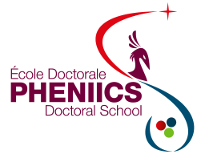Orateur
M.
Bertrand Michaut
(CEA)
Description
The French nuclear industry is looking into the extension of the operation time of pressurized water reactors (PWR) up to 60 years. The nuclear reaction occurs in a vessel which contains the core internals supporting the fuel assemblies. The lower parts of the internals are composed of Solution Annealed 304 austenitic stainless steel plates and Cold Worked 316 stainless steel bolts. Due to their high exposition to irradiation it is expected to reach doses as high as 120 dpa after 60 years, at a temperature ranging from 300 to 370°C.
Irradiation leads to microstructural and microchemical changes such as formation of black dots, dislocation loops and lines, cavities(voids and/or bubbles), segregation and precipitation. These may result in evolutions of the macroscopic behavior (swelling, irradiation creep, hardening, and corrosion resistance).
Swelling is a macroscopic dimensional modification. In Fast Breeder Reactors, it has been associated to the formation and growth of cavities. Cavities have been observed in PWR irradiated materials on several occasions, and with the aim of an extension of their operation time, the evolution of the microstructure at high doses is a matter of concern.
Heavy ion irradiations enable to reach high doses in little time and to avoid drawbacks of neutron irradiations such as activation. Such experiments are performed to simulate PWR microstructural evolutions under neutron irradiations. Two SA 304 steels containing different amounts of carbon are investigated.
Ion irradiations from 5 dpa to 100 dpa have been carried out at JANNuS-Saclay using iron ions (10 MeV). To counterbalance the flux effect, which is 2-3 orders of magnitude higher than PWR, irradiation temperature was set to 450°C. Radiation-induced microstructures are investigated by Transmission Electron Microscopy (TEM). The evolution of radiation-induced defects as cavities, Frank loops and precipitates with the dose are studied as well as the influence of carbon.
Auteur principal
M.
Bertrand Michaut
(CEA)



